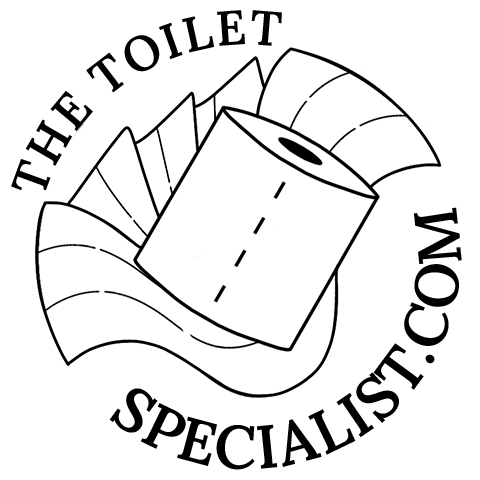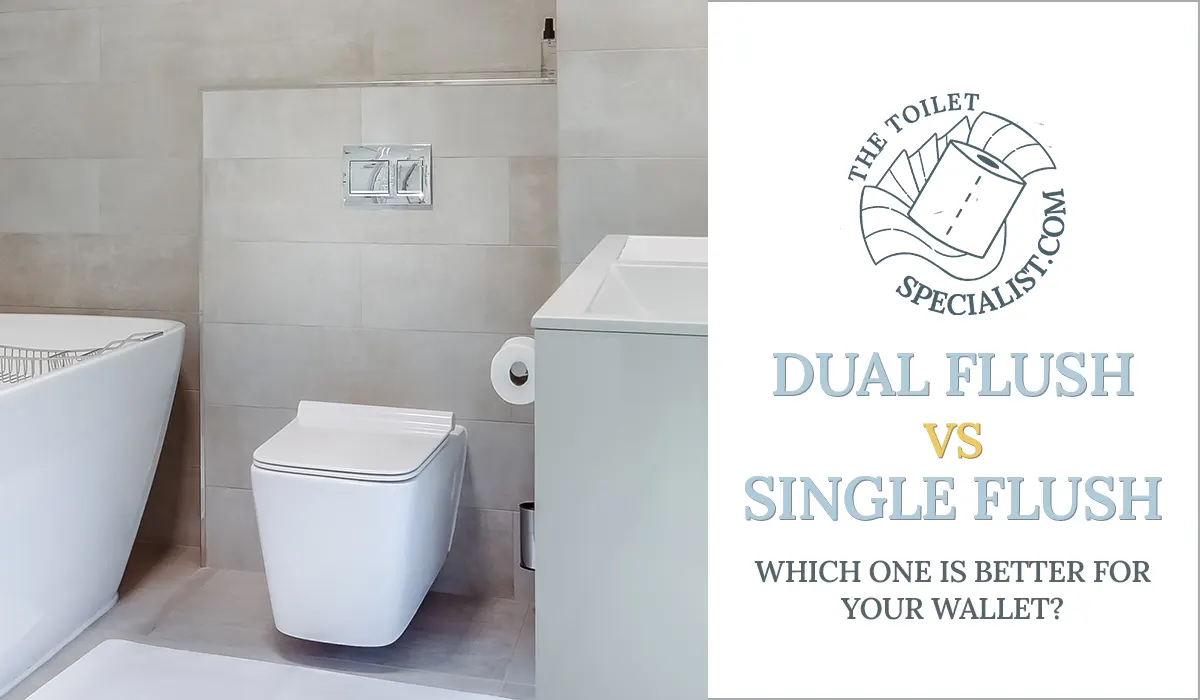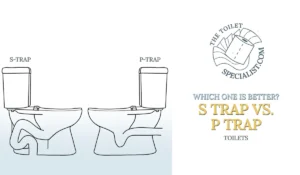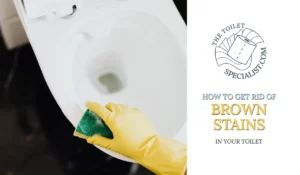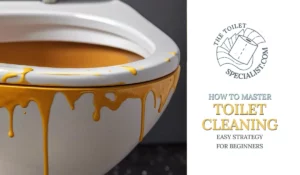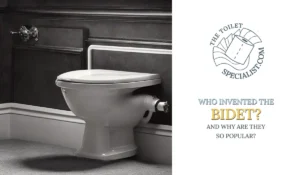The age-old question (not really) of whether dual flush or single flush toilets are better has finally been answered:
When it comes to dual flush vs single flush toilets, dual flush toilets use far less water when flushing the toilet. The use of less water per flush results in saving up to 4,000 gallons of water per year. Your water bill will be lower than if you use a single flush toilet.
Keep reading to find out the pros and cons of dual flush toilets and why single flush toilets may be better in certain situations.
What is the difference between a single flush and a dual flush toilet?
The difference between a single flush toilet and a dual flush toilet is that a single flush toilet only has one button or lever used to flush. A dual flush toilet has the option to choose between a button for liquids and a button for solids. The button for liquids uses less water to flush than the button for solids.
Although dual flush toilets are slightly less common than dual flush toilets in the US, dual flush toilets are far better for the environment and your wallet.
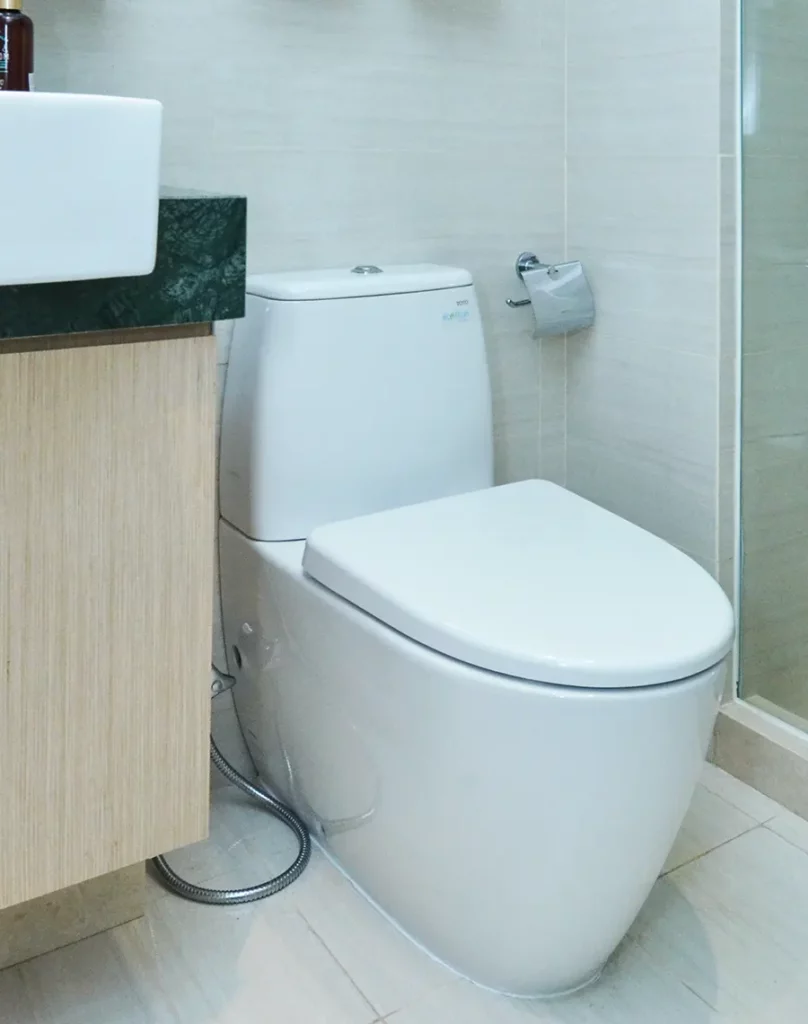
Is a dual flush toilet worth it?
Dual flush toilets are worth it because they significantly use less water than a single flush toilet. According to EPA, you save up to 4,000 gallons of water per year when you use a dual flush toilet. Not only do dual flush toilets cost you less money, but they’re also better for the environment.
Let’s do some quick math here. According to Medical News Today, on average people urinate six to seven times a day. On average, people poop three times a week to three times a day.
Let’s say the average person urinates six times a day and poops once a day.
How many gallons of toilet water do we use over a lifetime?
The average life expectancy in the United States is 77 years old. So we need to figure out how many days there are in 77 years and calculate how often we urinate and dedicate. Then we need to multiply the answer by your toilet’s GPF (gallons per flush) to know how much toilet water you use over a lifetime.
How many days there are in 77 years:
77 years = 28105 days
How often does someone who pees 6 times a day pee in 77 years?
28105 days x 6 pee’s a day = 168630 times you pee over a lifetime
How often does someone who poops once a day poop in 77 years?
1 x 28105 days = 28105 times you drop the kids off at the pool over a lifetime
How many times over a lifetime do you need to flush?
168630 + 28105 = 196735 times you need to flush over a lifetime
Now here comes the part we’ve been waiting for. On average, single flush toilets have a GPF (gallons per flush) of 1.28. We need to add every time we pee and poop and multiply that to the toilet’s GPF. Dual flush toilets have a GPF of 1.1 for pee and 1.6 for poop.
How many gallons of water do single flush toilets use over the course of a lifetime?
196735 x 1.28GPF = 251820.8 gallons of water over a lifetime
How many gallons of water do dual flush toilets use over the course of a lifetime?
168630 x 1.1GPF = 185493 gallons of water per pee
28105 x 1.6GPF = 44968 gallons of water per poop
185493 + 44968 = 230461 gallons of water over a lifetime
Dual flush toilets save up to 21359.8 gallons of water over a lifetime which is great for your wallet and the environment.
Something to keep in mind
Of course, these numbers are not exact: a baby, for example, doesn’t flush its excrement and perhaps older people don’t always use a toilet either. Some people pee far less and poop far more. It’s just to give you an idea of how much water you can save 🙂
Also, the GPF’s used in the example is that of modern toilets. Toilets older than 30 years may even have a GPF of 6 which is incredibly high.
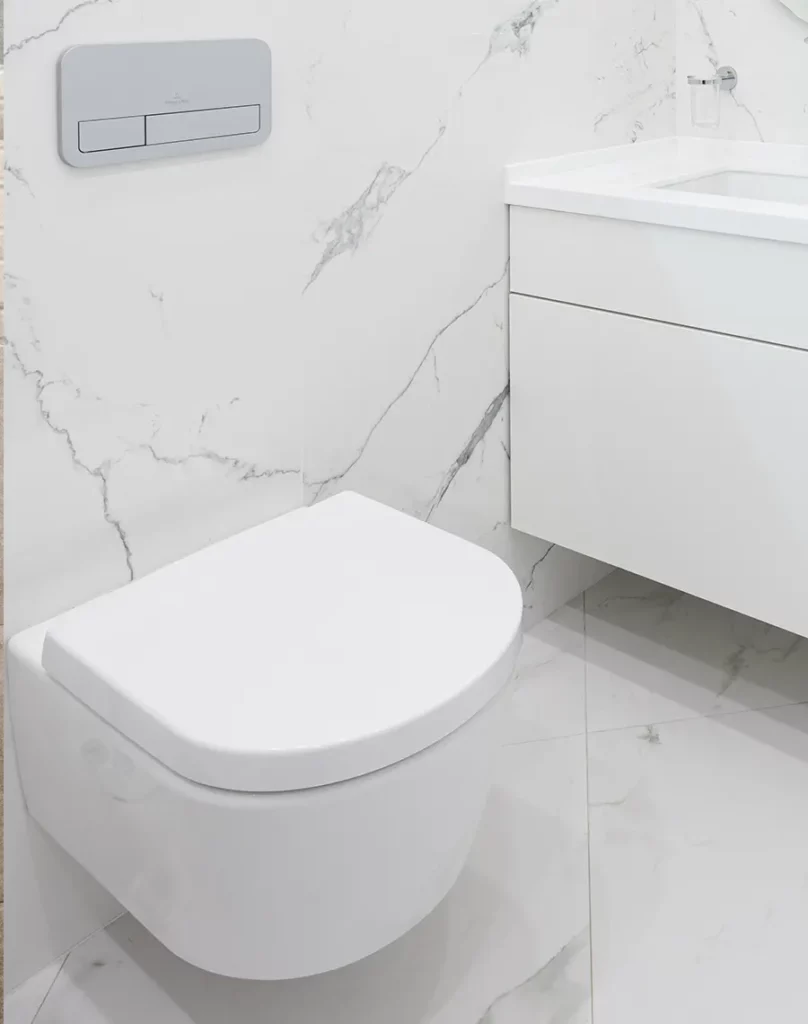
What are the pros and cons of a dual flush toilet?
The truth is, water isn’t that expensive. But when you’re living on a budget every penny counts. However, it’s not all about money. Saving so many gallons of water annually is a huge deal for the environment. It’s almost unimaginable how many gallons of water will be saved if everyone switched to dual flush toilets.
Here are some other pros and cons of a dual flush toilet:
Pros of a dual flush toilet
- It’s better for the environment than a single flush toilet
- Because it saves gallons and gallons of water
- Dual flush toilets are better for your wallet
- Using less water means a lower water bill
- To some people the look of a dual flush mechanism looks more high-end
Cons of a dual flush toilet
- Dual flush toilets are often more expensive than single flush toilets
- Depending on the toilet the price difference may be big or little
- Dual flush might require more cleaning than a single flush
- This is because they often use less water to flush, which means the toilet doesn’t automatically get ”deep cleaned” each time you flush
I personally grew up with dual flush toilets only. The only place I come across single flush toilest is public bathrooms.
What are the pros and cons of a single flush toilet?
Did you know that single flush toilest are most common in the US? Elsewhere, like in Europe, dual flush toilets are more common.
Pros of a single flush toilet
- Easy to use
- No room for mistakes like accidentally using the wrong button
- Great for high traffic places like public bathrooms
- Due to everyone using the correct button
Cons of a single flush toilet
- Worse for the environment than a dual flush toilet
- Because it uses a lot more water
- Worse for your wallet than a dual flush toilet
- The more water a toilet uses the higher your water bill
- Might look old fashioned
- Dual flush toilest look more aesthetically pleasing than single flush toilets to some
Which button to push on a dual flush?
The difference between a single flush toilet and a dual flush toilet is the amount of buttons used to flush. When it comes to a single flush toilet you just push one button and you’re ready to go. But when you use a dual flush toilet you need to push the correct button.
To know which button to push on a dual flush toilet you need to match your needs to the correct button: liquids (urine, menstrual blood) are to be flushed using the small button. Solids (poop, diarrhea) are to be flushed using the big button. The small button uses less water and thus force and the big button uses more water and force.
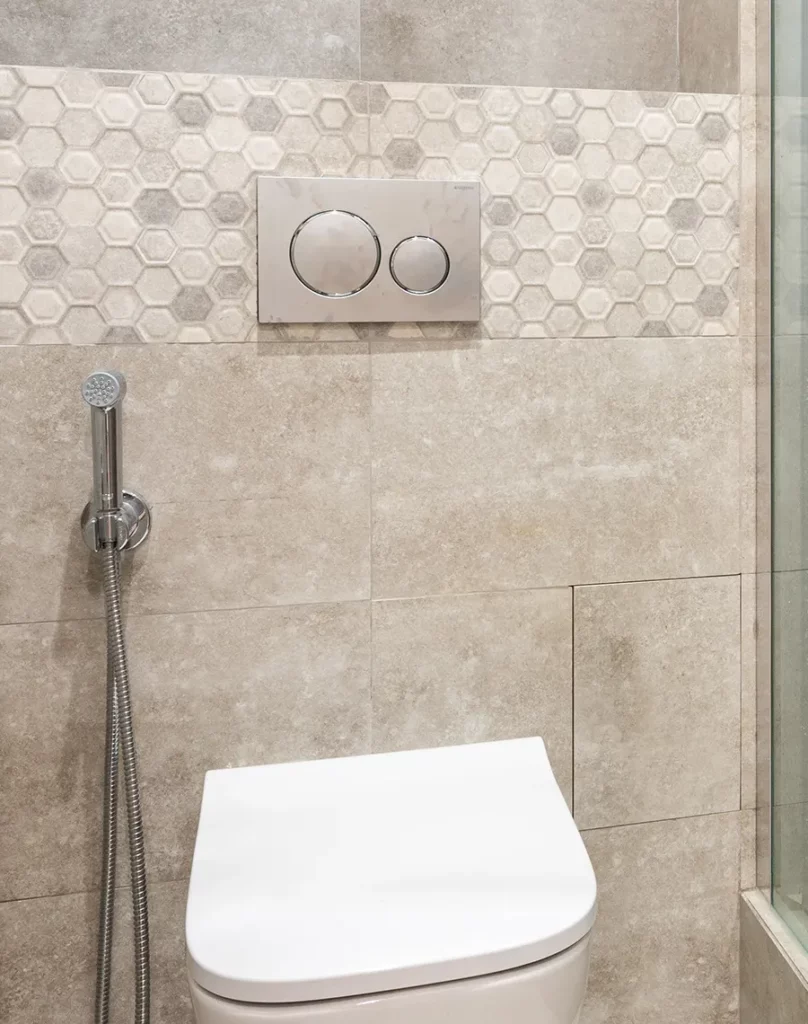
Sometimes liquids like menstrual blood or watery diarrhea are easy to flush which means you technically can use the small button. But often they leave some residue resulting in you having to flush twice.
It’s better to then use the big button because one flush with the big button saves more water than two flushes with the small button.
What is standard in the US single flush or dual flush toilets?
The standard flush mechanism in the US is single flush toilets. This is not because single flush toilets are better than dual flush toilets. The standard is single flush toilets because, single flush toilest were much more manufactured back in the day.
And since toilets can last up to decades most toilets have not been updated yet. Another thing to look out for is that if you have a toilet that is over 30 years old you should check what GPF your toilet has.
A high GPF is bad for your wallet and the environment. Some very old toilets even have a GPF of 6! Click here to read all about GPF and how to check what toilet yours has.
Are single flush toilets no good?
Single flush toilets are certainly not bad, they just are not as cost-effective and environment-friendly as dual flush toilets.
Situations in which single flush toilets are preferred are in high-traffic bathrooms: think of restaurants, shopping malls, movie theaters etc.
A single flush toilet is better in these environments because they are less likely to break (because there are fewer parts) and people will not accidentally use the small button for solids.
Using a small button for solids will result in the solids not flushing which means you have to flush again. This actually uses a lot more water than if someone would push the right button right away.
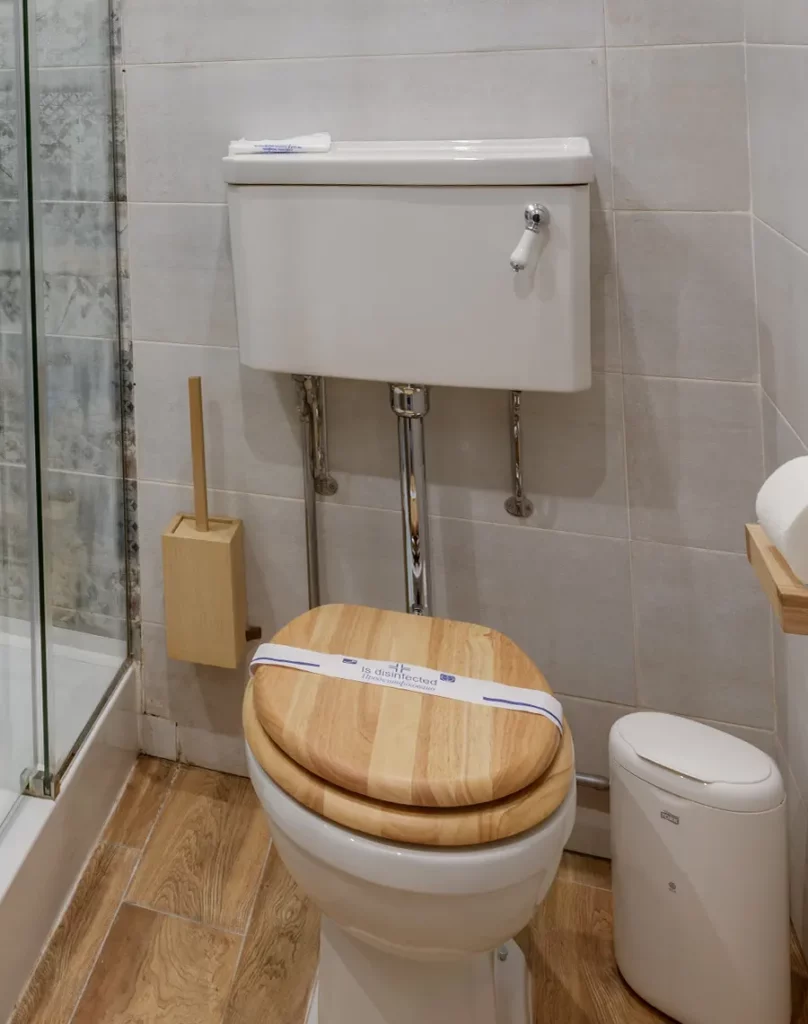
Also for some people like the elderly or disabled people single flush levers are easier to handle. For them, single flush toilets are great!
Frequently asked questions about dual flush vs single flush toilets
Read here the most asked questions about which flush mechanism is best
What is a single flush toilet?
A single flush toilet is a toilet that only has one button or lever to flush. Modern single flush toilets have a GPF of 1.28. Single flush toilets are the most common toilets in the US.
What is a dual flush toilet?
A dual flush toilet is a toilet that has two buttons to flush: one button for liquids and another button for solids. A modern dual flush toilet has two GPF’s: 1.1 for liquids and 1.6 for solids.
What is the benefit of a dual flush toilet?
The benefit of a dual flush toilet is that you can save gallons of water when you use the small button to flush liquids. You only use the big button, which flushes with more water, to flush away solids.
What are the disadvantages of dual flush toilets?
The biggest disadvantage of a dual flush toilet is that it cost more than a single flush toilet.
What is better dual flush or single flush?
A dual flush toilet is better than a single flush toilet because it saves a lot more water, in the long run, resulting in a lower water bill. On top of that, a dual flush toilet is also better for the environment because it uses a lot less water.
Disclaimer: TheToiletSpecialist.com is not responsible for any damage caused to your toilet by (wrongly) interpreting information found on this site. Please seek custom advice from a professional to evaluate your current situation.
